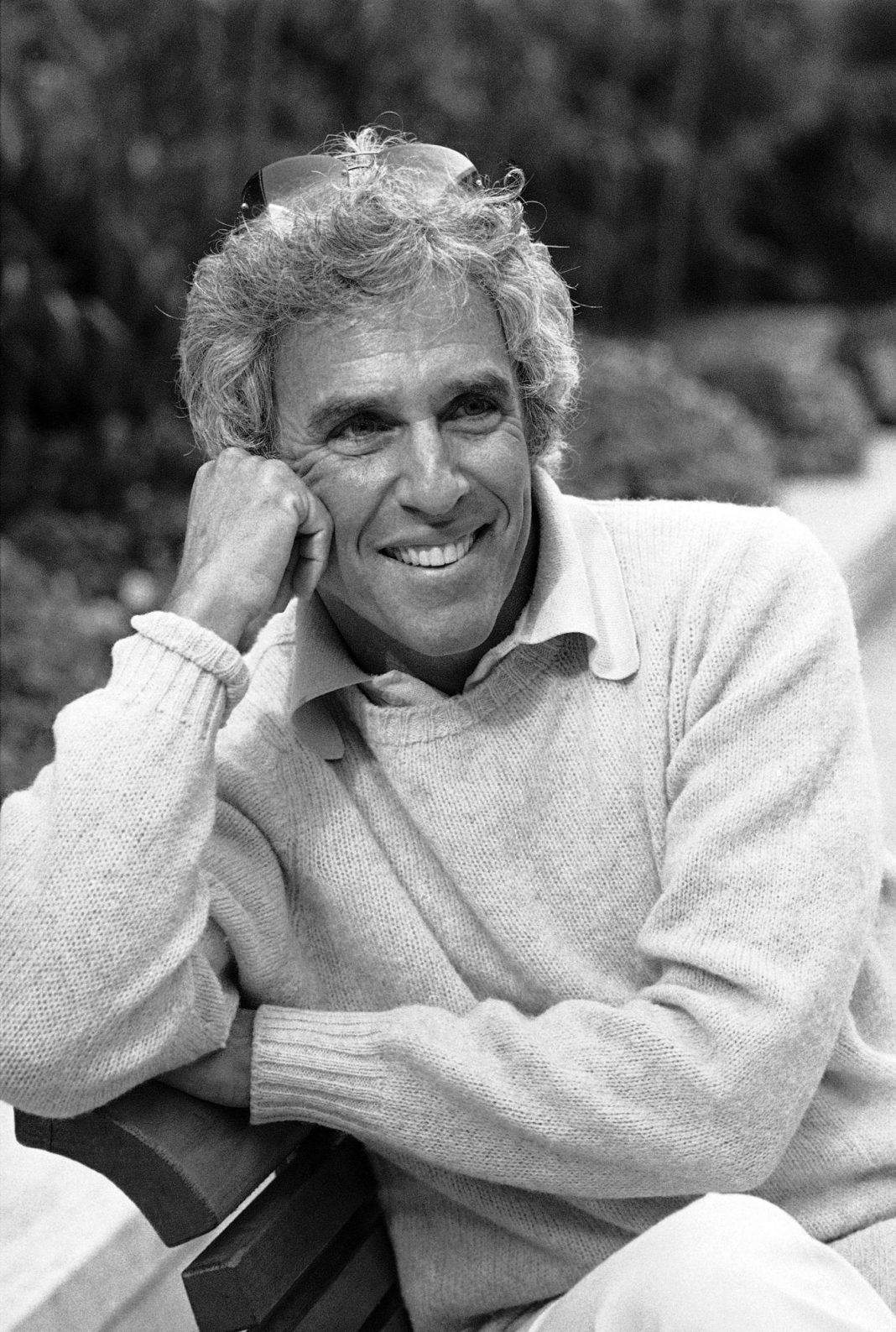|
Getting your Trinity Audio player ready...
|
Iconic American Composer & Songwriter Burt Bacharach Dies at 94; Known for His Unforgettable Melodies
Edited by: Fern Sidman
Burt Bacharach, the singularly gifted and popular composer who delighted millions with the quirky arrangements and unforgettable melodies of “Walk on By,” “Do You Know the Way to San Jose” and dozens of other hits, has died at the age of 94, the AP reported.
Bacharach’s publicist Tina Brausam said on Thursday that the Grammy, Oscar and Tony-winning composer died on Wednesday of natural causes, the AP reported.
Bacharach was born in Kansas City, Missouri, and grew up in the Kew Gardens section of Queens in New York City, graduating from Forest Hills High School in 1946. He was the son of Irma M. (née Freeman) and Mark Bertram “Bert” Bacharach, a well-known syndicated newspaper columnist, as was reported by Wikipedia. His mother was an amateur painter and songwriter who was responsible for urging Bacharach to study piano during his childhood. Wikipedia also reported that his family was Jewish, but he said that they were not observant nor did they pay much attention to their religion. “But the kids I knew were Catholic,” Bacharach once said. “I was Jewish but I didn’t want anybody to know about it.”
The AP reported that Bacharach knew the very heights of acclaim, but he remembered himself as a loner growing up, a short and self-conscious boy so uncomfortable with being Jewish that he taunted other Jews. H is favorite book as a kid was Ernest Hemingway’s “The Sun Also Rises”. The AP reported that he related to the sexually impotent Jake Barnes, regarding himself as “socially impotent.”
Bacharach showed a keen interest in jazz as a teenager, disliking his classical piano lessons, and often used a fake ID to gain admission into 52nd Street nightclubs, Wikipedia reported. He got to hear bebop musicians such as Dizzy Gillespie and Count Basie, whose style would later influence his songwriting.
“They (the nightclubs)were just so incredibly exciting that all of a sudden, I got into music in a way I never had before,” Bacharach recalled in the memoir “Anyone Who Had a Heart,” published in 2013, the AP reported. “What I heard in those clubs turned my head around.”
Bacharach studied music at Montreal’s McGill University and earned a Bachelor of Music degree in 1948. He studied under Helmut Blume, at the Mannes School of Music, and at the Music Academy of the West in Montecito, California. Wikipedia reported that during this period he studied a range of music, including jazz harmony, which became important to his songs, which are generally considered pop music. His composition teachers included Darius Milhaud, Henry Cowell,and Bohuslav Martinů. Bacharach cited Milhaud, under whose guidance he wrote a “Sonatina for Violin, Oboe and Piano”, as his greatest influence.
Bacharach was drafted into the United States Army in 1950 and served for two years. He was stationed in Germany and played piano in officers’ clubs there, and at Fort Dix, and Governors Island, as per Wikipedia. During this time, he arranged and played music for dance bands.
Bacharach met the popular singer Vic Damone while they were both serving in the army in Germany. Wikipedia reported that subsequent to his discharge, Bacharach spent the next three years as a pianist and conductor for Damone. Damone recalls, “Burt was clearly bound to go out on his own. He was an exceptionally talented, classically trained pianist, with very clear ideas on the musicality of songs, how they should be played, and what they should sound like. I appreciated his musical gifts.” Wikipedia reported that he later worked in a similar capacity for various other singers, including Polly Bergen, Steve Lawrence, the Ames Brothers, and Paula Stewart (who became his first wife). When he was unable to find better jobs, Bacharach worked at resorts in the Catskill Mountains of New York, where he accompanied singers such as Joel Grey.
The AP reported that over the past 70 years, only Lennon-McCartney, Carole King and a handful of others rivaled his genius for instantly catchy songs that remained performed, played and hummed long after they were written. He had a run of top 10 hits from the 1950s into the 21st century, and his music was heard everywhere from movie soundtracks and radios to home stereo systems and iPods, whether it be such mega hits as “Alfie” and “I Say a Little Prayer” or “I’ll Never Fall in Love Again” and “This Guy’s in Love with You.”
Dionne Warwick was his favorite interpreter, but Bacharach, usually in tandem with lyricist Hal David, also created prime material for Aretha Franklin, Dusty Springfield, Tom Jones and many others, the AP reported. Elvis Presley, the Beatles and Frank Sinatra were among the countless artists who covered his songs, with more recent performers who sung or sampled him including White Stripes, Twista and Ashanti. “Walk On By” alone was covered by everyone from Warwick and Isaac Hayes to the British punk band the Stranglers and Cyndi Lauper.
Bacharach was both an innovator and throwback, and his career seemed to run parallel to the rock era, according to the AP report. His appeal often seemed more aligned with Tin Pan Alley than with Bob Dylan, John Lennon and other writers who later emerged, but rock composers appreciated the depth of his seemingly old-fashioned sensibility.
In 1957, Bacharach and lyricist Hal David met while at the Brill Building in New York City, and began their writing partnership, Wikipedia reported. They received a career breakthrough when their song “The Story of My Life” was recorded by Marty Robbins, becoming a number 1 hit on the U.S. Country Chart in 1957.
Despite Bacharach’s early success with Hal David, he spent several years in the early 1960s writing songs with other lyricists, primarily Bob Hilliard. Wikipedia reported that some of the more successful Bacharach-Hilliard songs include “Please Stay” (The Drifters, 1961), “Tower of Strength” (Gene McDaniels, 1961), “Any Day Now (My Wild Beautiful Bird)” (Chuck Jackson, 1962), and “Mexican Divorce” (The Drifters, 1962). In 1961 Bacharach was credited as arranger and producer, for the first time on both label and sleeve, for the song “Three Wheels on My Wagon” written jointly with Hilliard for Dick Van Dyke, as per the Wikipedia report.
Bacharach and David formed a writing partnership in 1963. Wikipedia reported that Bacharach’s career received a boost when singer Jerry Butler asked to record “Make It Easy on Yourself” and also wanted him to direct the recording sessions. It became the first time Bacharach managed the entire recording process for one of his own songs.
“The shorthand version of him is that he’s something to do with easy listening,” Elvis Costello, who wrote the 1998 album “Painted from Memory” with Bacharach, said in a 2018 interview with The Associated Press. “It may be agreeable to listen to these songs, but there’s nothing easy about them. Try playing them. Try singing them.”
A box set, “The Songs of Bacharach & Costello,” is due to come out March 3, the AP reported.
The AP reported that he triumphed in many art forms. He was an eight-time Grammy winner, a prize-winning Broadway composer for “Promises, Promises” and a three-time Oscar winner. He received two Academy Awards in 1970, for the score of “Butch Cassidy and the Sundance Kid” and for the song “Raindrops Keep Fallin’ on My Head” (shared with David). In 1982, he and his then-wife, lyricist Carole Bayer Sager, won for “Best That You Can Do,” the theme from “Arthur. His other movie soundtracks included “What’s New, Pussycat?”, “Alfie” and the 1967 James Bond spoof “Casino Royale.”
Bacharach was well rewarded, and well connected. He was a frequent guest at the White House, whether the president was Republican or Democrat, according to the AP report. And in 2012, he was presented the Gershwin Prize by Barack Obama, who had sung a few seconds of “Walk on By” during a campaign appearance.
In his life, and in his music, he stood apart. Fellow songwriter Sammy Cahn liked to joke that the smiling, wavy-haired Bacharach was the first composer he ever knew who didn’t look like a dentist. The AP reported that Bacharach was a “swinger,” as they called such men in his time, whose many romances included actress Angie Dickinson, to whom he was married from 1965-80, and Carole Bayer Sager, his wife from 1982-1991. He was married to his first wife, Paula Stewart, from 1953-58, and married for a fourth time, to Jane Hansen, in 1993. He is survived by Hansen, as well as his children Oliver, Raleigh and Cristopher, according to his publicist Tina Brausam, the AP reported. He was preceded in death by his daughter with Dickinson, Nikki Bacharach.
The AP also reported that Bacharach formed his most lasting ties to his work. He was a perfectionist who took three weeks to write “Alfie” and might spend hours tweaking a single chord. Sager once observed that Bacharach’s life routines essentially stayed the same — only the wives changed.
It began with the melodies — strong yet interspersed with changing rhythms and surprising harmonics. He credited much of his style to his love of bebop and to his classical education, especially under the tutelage of Darius Milhaud, the famed composer. The AP also reported that he once played a piece for piano, violin and oboe for Milhaud that contained a melody he was ashamed to have written, as 12-point atonal music was in vogue at the time. Milhaud, who liked the piece, advised the young man, “Never be afraid of the melody.”
“That was a great affirmation for me,” Bacharach recalled in 2004.
Bacharach was essentially a pop composer, but his songs became hits for country artists (Marty Robbins), rhythm and blues performers (Chuck Jackson), soul (Franklin, Luther Vandross) and synth-pop (Naked Eyes), as was reported by the AP. He reached a new generation of listeners in the 1990s with the help of Costello and others.
Mike Myers would recall hearing the sultry “The Look of Love” on the radio and finding fast inspiration for his “Austin Powers” retro spy comedies, in which Bacharach made cameos, as per the AP report.
In the 21st century, he was still testing new ground, writing his own lyrics and recording with rapper Dr. Dre.





